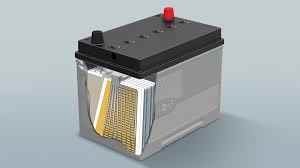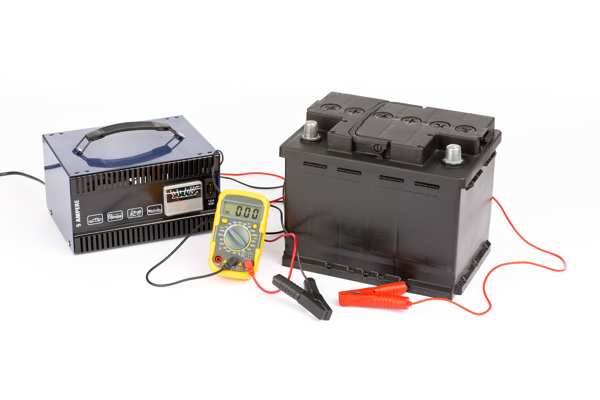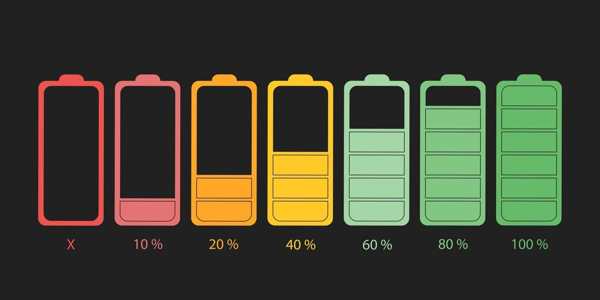Is een gelbatterij beter dan een loodzuurbatterij?
Wanneer u batterijen kiest voor een zonnestelsel, RV, of back -up power setup, Je zult vaak verschillende lead-ocid-technologieën tegenkomen. Dit kan leiden tot een gemeenschappelijke vraag: Is een "gelbatterij" Een betere keuze dan een standaard "lead-ocid-batterij"? Om dat te beantwoorden, We moeten eerst verduidelijken dat een gelbatterij is Een specifiek type loodzuurbatterij. Laten we de verschillen onderzoeken om de juiste pasvorm voor uw behoeften te vinden.
Een gelbatterij is een soort afgesloten, onderhoudsvrije loodzuurbatterij (Ook bekend als een VRLA-Klep gereguleerde loodzuurbatterij). Wanneer mensen het vergelijken met een "loodzuurbatterij," Ze verwijzen meestal naar de traditionele overstroomde loodzuur (FLA) type, die een vloeibare elektrolyt heeft en regelmatig onderhoud vereist. Dus, is een gelbatterij "beter"? Het hangt af van uw prioriteiten. Een gelbatterij is beter in termen van onderhoudsvrij en morsenvrij zijn, Maar een overstroomde loodzuurbatterij is vooraf vooraf minder duur en kan erg robuust zijn als u bereid bent het vereiste onderhoud uit te voeren.

Bij Gycx Solar, We leveren een reeks batterijtechnologieën, inclusief verschillende soorten loodzuurbatterijen, Omdat we weten dat verschillende projecten verschillende vereisten en budgetten hebben. Laten we de vergelijking afbreken om u te helpen een goed geïnformeerde beslissing te nemen.
Wat zijn de nadelen van een gelbatterij?
Terwijl de "het instelt en het vergeet" De natuur van gelbatterijen is erg aantrekkelijk, Ze zijn niet zonder hun eigen potentiële nadelen. Inzicht in de beperkingen van gelbatterijen is de sleutel om te beslissen of ze de juiste langetermijnoplossing zijn voor uw specifieke toepassing.
De belangrijkste nadelen van een gelbatterij zijn zijn hogere initiële kosten Vergeleken met zijn ondergelopen loodzure tegenhangers. Het is ook met name gevoelig voor laadparameters; Het gebruik van een onjuiste oplader of overladen kan permanente schade aan de gel -elektrolyt veroorzaken. Verder, gelbatterijen hebben meestal langzamere lading- en ontladingspercentages, wat een beperking kan zijn in toepassingen die een hoog vermogen of zeer snel opladen vereisen.

Duik dieper: Een nadere beschouwing van de beperkingen van de gelbatterij
Laten we deze nadelen in meer detail onderzoeken:
- Hogere kosten vooraf: Het productieproces voor gelbatterijen is complexer dan voor traditionele overstroomde batterijen. Dit resulteert in een hogere aankoopprijs voor een batterij van dezelfde capaciteit, wat een belangrijke factor kan zijn voor mensen met een krap budget.
- Laadgevoeligheid: Dit is misschien wel het meest kritieke nadeel. Gelbatterijen vereisen een specifiek oplaadprofiel met een lagere spanning dan overstroomde batterijen. Met behulp van een oplader die is ontworpen voor overstroomde cellen, die vaak een hoogspannings "egalisatie omvat" fase, kan destructief zijn. Het zal "koken" de gel, waardoor het uitdroogt en wegkomt van de loodplaten, het maken van leegte en het permanent verminderen van de capaciteit en de levensduur van de batterij. Dit maakt een compatibele oplader absoluut essentieel.
- Langzamer opladen: Vanwege hun hogere interne weerstand en de noodzaak om oververhitting te voorkomen, gelbatterijen kunnen over het algemeen geen lading accepteren zo snel als overstroomd of AGM1. (Absorberende glasmat) batterijen. Dit kan een nadeel zijn in een zonne -energiesysteem op dagen met beperkte zon, omdat het langer kan duren om de lading van de batterij aan te vullen.
- Lager vermogen: Dezelfde hogere interne weerstand betekent dat gelbatterijen niet zo effectief zijn in het leveren van zeer hoge stromen. Hoewel dit minder een probleem is voor gestage, Deep-cyclustoepassingen zoals zonne-opslag, Het maakt ze minder geschikt voor hoogbreiende toepassingen zoals het starten van een grote motor.
- Prestaties in extreme kou: Terwijl alle loodzuurbatterijen worden beïnvloed door koude, De prestaties van gelbatterijen kunnen soms meer merkbaar worden verlaagd bij zeer koude temperaturen naarmate de gegeleerde elektrolyt meer viskeuzer en traag wordt.
- Onomkeerbare schade: De verzegelde, Onderhoudsvrij ontwerp is een voordeel, Maar het betekent ook dat schade door te overladen, oververhitting, of fysiek compromis is meestal permanent. U kunt geen water toevoegen om "nieuw leven in te blazen" Een uitgedroogde gelcel zoals je zou kunnen met een overstroomde batterij.
Hebben gelbatterijen een speciale oplader nodig?
U overweegt een gelbatterij en u vraagt zich af of u deze gewoon kunt aansluiten op uw bestaande batterijlader. Dit is een uitstekende en zeer belangrijke vraag. Het gebruik van de juiste oplader is absoluut van cruciaal belang om de verwachte prestaties en levensduur van een gelbatterij te krijgen.
Ja, gelbatterijen hebben een "special nodig" of, nauwkeuriger, Een compatibele slimme oplader met een specifiek gellaadprofiel. Standaardladers ontworpen voor overstroomde loodzuurbatterijen gebruiken vaak setpoints met een hogere spanning en een egalisatielaadcyclus die schadelijk is voor gelbatterijen. Een gelspecifiek profiel gebruikt lager, Meer precieze spanningen en laat de hoogspanningsvergelijkingsfase weg om het uitdrogen te voorkomen en de gel elektrolyt te beschadigen.

Duik dieper: Waarom de juiste oplader niet onderhandelbaar is
Dit is de reden waarom een gel-compatibele oplader essentieel is:
- Voorkomt overspanning: Gelbatterijen zijn gevoelig voor hoge spanning. Een typische overstroomde loodzuurlader kan de spanning duwen tot 14,8V of zelfs hoger tijdens de absorptie- of egalisatiefasen. Voor een gelbatterij, Dit is te hoog en zal schade veroorzaken. Een goed gelprofiel beperkt meestal de laadspanning tot een lager bereik, Vaak rond 14.1V tot 14.4V.
- Elimineert schadelijke egalisatie: Egalisatie is een opzettelijk, Gecontroleerde overbelasting uitgevoerd op overstroomde loodzuurbatterijen om de loodplaten te de-sulferen en de cellen in evenwicht te brengen. Het uitvoeren van deze hoogspanningslading op een afgesloten gelbatterij is destructief. Het zorgt ervoor dat het water in de gel -elektrolyt afbreekt in waterstof en zuurstof, die zijn geventileerd door de veiligheidskleppen. Omdat je geen water kunt toevoegen, Dit proces droogt de gel permanent uit, het creëren van ruimtes en het verpesten van de batterij.
- Temperatuurcompensatie: Veel hoogwaardige slimme laders voor gelbatterijen omvatten een temperatuursensor. Hierdoor kan de oplader de laadspanning aanpassen op basis van de temperatuur van de batterij - deze enigszins verhogen wanneer het koud is en het afneemt wanneer het heet is. Dit zorgt voor een meer accurate en veiliger lading, verlenging van de levensduur van de batterij.
- Moderne multi-profile opladers: Het goede nieuws is dat veel moderne 'slimme" Batterijladers en zonnestuurders zijn ontworpen om veelzijdig te zijn. Ze worden vaak geleverd met voorgeprogrammeerde instellingen voor verschillende batterijchemie, inclusief overstroomd, AGM, Gel, en soms lithium. Het is cruciaal om de handleiding te lezen en ervoor te zorgen dat u de "GEL" instelling voordat u begint op te laden.
GYCX Solar Story: "We hebben ooit een klant geraadpleegd wiens nieuwe gelbatterijbank in minder dan een jaar was gefaald. Het bleek dat hun oude zonnekrachtcontroller was ingesteld op een standaard overstroomd batterijprofiel met een wekelijkse egalisatielaad. Het was langzaam maar zeker hun investering vernietigd. We hebben het vervangen door een moderne controller, correct geprogrammeerd voor hun nieuwe gelbatterijen, En sindsdien hebben ze geen problemen gehad. Het is een perfect voorbeeld van waarom expertise in systeemcomponenten zo belangrijk is."
Hoeveel jaar zal een gelbatterij duren?
Wanneer u in batterijen investeert, Vooral voor een kritieke toepassing zoals opslag van zonne -energie, U wilt een duidelijk idee hebben van hun verwachte levensduur. Hoeveel jaar betrouwbare service kunt u redelijkerwijs verwachten van een diepe cyclusgelbatterij?
Een hoogwaardige De diepe cyclus gelbatterij kan meestal tussen 5 En 10 jaren In termen van kalenderleven, op voorwaarde dat het wordt gebruikt en correct wordt geladen binnen een gematigde temperatuuromgeving. In termen van gebruik, het kan overal afleveren van 500 naar over 1,000 lading-ontladingscycli, Afhankelijk van de kwaliteit van de batterij en hoe diep deze regelmatig wordt ontslagen.

Duik dieper: Factoren die de langleven van de gelbatterij beïnvloeden
De "5 tot 10 jaren" en "500-1000+ cycli" zijn schattingen; De werkelijke levensduur die u krijgt, hangt af van verschillende belangrijke factoren:
- Diepte van ontlading (DoD): Dit is een van de belangrijkste factoren. DOD verwijst naar het percentage van de capaciteit van de batterij die in elke cyclus wordt gebruikt. Een batterij die alleen wordt ontslagen 25% van zijn capaciteit zal veel meer cycli duren dan een capaciteit die consequent wordt ontslagen 80%. Bijvoorbeeld, Een fabrikant kan zijn gelbatterij beoordelen 1,200 cycli bij 50% DoD, maar alleen 500 cycli bij 80% DoD. Om de levensduur te maximaliseren, Het is vaak verstandig om uw batterijbank te vergroten, zodat u deze niet dagelijks te diep hoeft te ontladen.
- Laadmethode: Zoals we hebben besproken, Het gebruik van de juiste lader met een gelspecifiek profiel is absoluut cruciaal. Consistent overladen of onderlading zal de levensduur van de batterij drastisch verkorten.
- Bedrijfstemperatuur: Alle batterijen van loodzuren zijn gevoelig voor warmte. Voor elke 10 ° C (18° F) Verhoging van de gemiddelde bedrijfstemperatuur boven 25 ° C (77° F), De levensduur van een batterij kan in tweeën worden gesneden. De batterijen in een koel houden, Stabiele omgeving is de sleutel tot een lange levensduur.
- Kwaliteit van de productie: Niet alle gelbatterijen zijn gelijk gemaakt. Gerenommeerde fabrikanten gebruiken een hogere zuivere voorsprong en robuustere interne constructie, wat leidt tot betere prestaties en een langere levensduur.
- Hoe het vergelijkt:
- vs. Overstroomde loodzuur (FLA): Een goed verzorgde gelbatterij zal doorgaans een verwaarloosde FLA-batterij overleven. Echter, een premium, Zorgvuldig onderhouden industriële Fla -batterij kan een vergelijkbare of zelfs langere levensduur bieden.
- vs. Lithium (LFP): Dit is waar het verschil grimmig is. Een moderne LFP -batterij, Zoals die GYCX -zonne -zon vaak aanbevelen voor zonne -energie, biedt een veel langer leven, typisch 10-20 jaren en 3,000-6,000+ cycli, waardoor het een superieure investering op lange termijn is voor veel toepassingen, ondanks de hogere initiële kosten.
Kun je een gelbatterij overladen??
We hebben gezegd dat gelbatterijen gevoelig zijn voor hun oplaadparameters. Laten we dit frontaal aanpakken: Kun je een gelbatterij overladen?, En zo ja, Hoe serieus is het?
Ja, U kunt een gelbatterij absoluut te veel te veel laden, En dit is uiterst schadelijk, vaak onomkeerbare schade toebrengen aan zijn capaciteit en levensduur. In tegenstelling tot een traditionele ondergelopen loodzuurbatterij waar u verdampt water kunt vervangen, Het verzegelde ontwerp van een gelbatterij betekent dat elke schade door overladen permanent is. Dit is de reden waarom het gebruik van een compatibel, Spanningsgereguleerde oplader is niet onderhandelbaar voor dit batterijtype.

Duik dieper: Wat gebeurt er tijdens overladen
Wanneer een loodzuurbatterij wordt opgeladen, Een chemische reactie brengt loodsulfaat terug in lood en looddioxide. Als u een laadstroom blijft toepassen nadat de batterij vol is (d.w.z., je laadt het over), Een ander proces genaamd elektrolyse begint te domineren.
- Elektrolyse en vergassing: De overtollige elektrische energie begint de watercomponent van de elektrolyt af te breken in waterstof en zuurstofgas.
- Drukophoping: In een verzegelde VRLA -batterij als een geltype, Deze gassen zijn meestal bedoeld om terug in water te recombineren. Echter, Overmatig overladen produceert sneller gas dan het kan recombineren. Dit bouwt druk op in de batterij.
- Ventilatie en waterverlies: De veiligheidskleppen op de batterij zullen openen om deze overtollige druk af te geven, Het aftappen van het waterstof- en zuurstofgas uit de batterij. Omdat de batterij is verzegeld, Dit verloren water kan nooit worden vervangen.
- Het resultaat: Permanente schade: Dit proces heeft twee destructieve effecten. Eerst, Het verlies van water droogt de elektrolyt van de silicagel uit. De gel krimpt, verharden, en kan wegtrekken van de loodplaten, ongeldig maken. Dit betekent dat delen van de plaat niet langer in contact zijn met de elektrolyt, En dat gebied kan niet langer opslaan of leveren, leidend tot een permanent verlies van capaciteit. Seconde, De warmte die wordt gegenereerd door overladen kan de loodplaten kromtrekken en de algehele chemische afbraak versnellen.
Dit is de reden waarom de "egalisatie" aanval, die een gecontroleerde overbelasting is die gunstig is voor ondergelopen batterijen, is een doodvonnis voor gelbatterijen. Een juiste gel-compatibele slimme oplader of zonnestuurder is ontworpen om te herkennen wanneer de batterij vol is en de stroom afsnijdt of drastisch vermindert, het voorkomen van deze hele destructieve cyclus. Bij GYCX Solar, Zorgen voor de perfecte match tussen batterijtechnologie en laadsysteem is een fundamenteel onderdeel van ons ontwerpproces om de veiligheid en levensduur van de investeringen van onze klanten te garanderen.
Dus, is een gelbatterij beter dan een traditionele overstroomde loodzuurbatterij? Het antwoord is: Het is beter als u prioriteit geeft aan onderhoudsvrij gemak, Installatieflexibiliteit, en morsen-proof veiligheid, en zijn bereid te investeren in het juiste oplaadsysteem. Echter, Als de laagste kosten vooraf uw primaire bestuurder zijn en u zich inzet voor regelmatig onderhoud, Een overstroomde batterij kan een zeer robuuste keuze zijn. Voor veel zonnetoepassingen vandaag, De superieure levensduur en prestaties van lithiumbatterijen presenteren een derde, Zeer dwingende optie.
Bij GYCX Solar, Wij bieden een reeks oplossingen voor loodzure en lithiumbatterijen. Onze expertise ligt in het helpen van deze afwegingen om de batterij te selecteren die echt aan uw behoeften voldoet, uw budget, En uw levensstijl. Als u meer vragen heeft, We moedigen u aan om contact met ons op te nemen voor een professioneel consult.
Meer informatie over het concept van absorberende glazen mat om gegevensconcepten met betrekking tot batterijen beter te vergelijken en te begrijpen. Dit helpt u bij het kiezen van een product dat beter past bij uw behoeften. ↩
